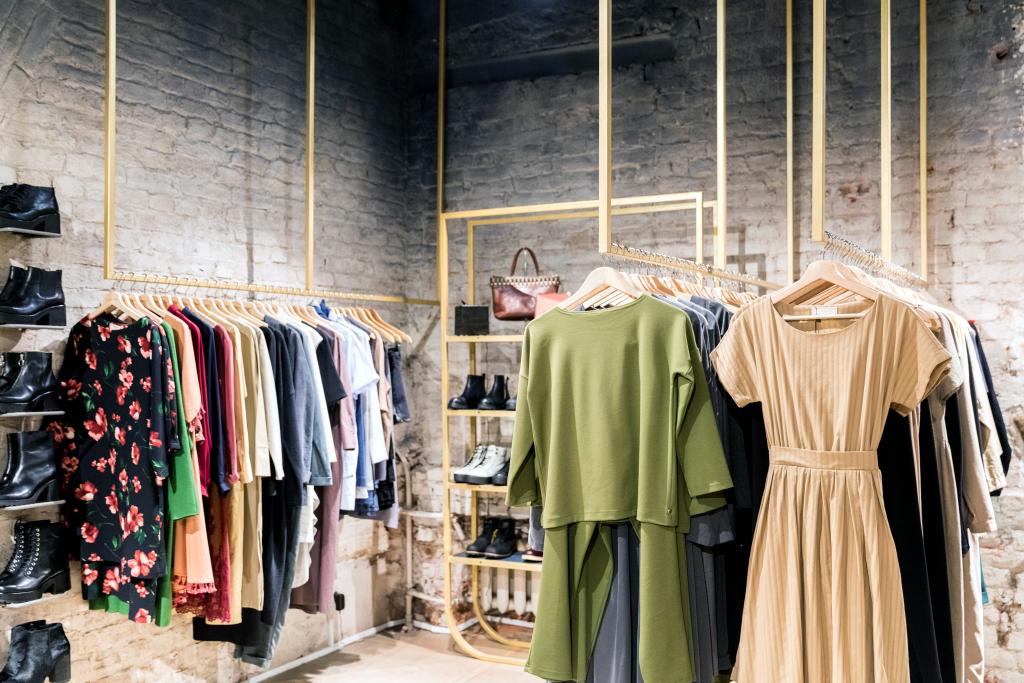The clothing industry is booming, with new trends and consumer demands constantly emerging. If you’ve ever dreamt of turning your passion for fashion into a business, now might be the perfect time. But where do you even begin? This comprehensive guide will walk you through everything you need to know about how to start a clothing business in 2024, from crafting a unique concept to turning a profit.
Why You Should Start A Clothing Business?
Launching a clothing business can be an exciting and fulfilling journey for the right entrepreneur. Here are a few reasons to consider this path:Creative Outlet and Personal Brand Building:
Do you dream of seeing your sketches come to life on clothing racks? A clothing business allows you to translate your creative vision into tangible products. It’s a chance to establish your own unique style and build a brand identity that resonates with your target audience. Imagine the thrill of seeing people sporting your designs and feeling confident in their own skin because of your creations!Be Your Own Boss and Lead the Way:
If you crave the freedom and challenge of running your own show, a clothing business offers an excellent opportunity. You’ll have the autonomy to make design decisions, set your own schedule, and steer the course of your brand. This entrepreneurial spirit can be incredibly motivating, allowing you to directly witness the impact of your hard work and strategic choices.Profit Potential and Building Sustainable Income:
The clothing industry can be quite lucrative, particularly if you can identify a gap in the market and cultivate a loyal customer base. With careful planning, effective marketing, and a keen understanding of your target market’s needs, you can turn your passion project into a source of sustainable income. The ability to turn a profit while doing something you love is a powerful motivator for many aspiring business owners.Building a Community and Fostering Connections:
Your clothing brand can be more than just a collection of garments; it can be a platform for fostering a community. As you build your brand, you’ll connect with like-minded individuals who share your passion for fashion. This can lead to exciting collaborations with influencers, stylists, or even fellow fashion entrepreneurs. You’ll also forge connections with your customers, fostering a sense of belonging and brand loyalty.Making a Positive Impact:
The clothing industry has a well-documented environmental and social footprint. By starting your own clothing line, you have the power to make a positive impact. You can source sustainable materials, prioritize ethical labor practices throughout your supply chain, and promote social causes you care about. This allows you to align your business with your values and contribute to a more conscious fashion industry. Of course, starting a clothing business also comes with its own set of challenges. It requires significant upfront investment, relentless marketing efforts, and the ability to navigate a competitive market. Success won’t happen overnight, and you’ll need to be prepared to adapt and learn from your experiences.Which Option Is Better: Online Vs Offline For Selling Clothes?
There’s no single “better” option between online and offline for selling clothes. The ideal approach actually depends on several factors, including your resources, target market, and brand strategy. Here’s a breakdown of the pros and cons of each to help you decide:Online Selling:
Pros:- Lower upfront costs: No need to rent a physical storefront, reducing overhead expenses.
- Wider reach: Sell to customers anywhere in the world, not just limited by location.
- Convenience for customers: Allows for 24/7 shopping from the comfort of their homes.
- Easier data collection and analysis: Gain valuable insights into customer behavior and buying habits through website analytics.
- Higher marketing costs: Need to invest in online advertising and social media marketing to drive traffic to your website.
- Customer cannot physically try on clothes: This can lead to higher return rates due to sizing or fit issues.
- Reliance on technology: Your website needs to be user-friendly and function smoothly to avoid losing potential customers.
Offline Selling:
Pros:- Tangible shopping experience: Customers can try on clothes before buying, leading to lower return rates.
- Ability to build relationships with customers: Provides opportunities for face-to-face interactions and personalized service.
- Stronger brand image: A physical store can serve as a brand extension and create a more immersive brand experience.
- Higher upfront costs: Rent, utilities, staffing, and store maintenance can be expensive.
- Limited reach: Customer base is restricted to the geographical location of your store.
- Less data on customer behavior: Gathering customer insights can be more challenging compared to online stores.
- Your target market: If your ideal customer is tech-savvy and prefers online shopping, then an online store might be a better fit. But if your target audience values the in-person experience, a physical store might be more effective.
- Your brand image: A luxury brand might benefit from a physical store to showcase its products and create a high-end experience. On the other hand, a trendy streetwear brand might thrive online with a strong social media presence.
- Your resources: Starting an online store requires less upfront investment than a physical store. However, you’ll need to invest in marketing and website development.
How To Start A Clothing Business In 5 Steps
The fashion industry beckons with creativity, self-expression, and the potential to build a successful brand. But where do you begin? Here’s a breakdown of the key steps to transform your clothing line concept into a thriving business:1. Niche Down and Find Your Focus
The clothing market is vast. Don’t try to be everything to everyone. Instead, identify a unique niche that resonates with your passion and fills a gap in the market. This could be anything from high-performance activewear for athletes seeking stylish functionality to comfortable yet trendy work attire for young professionals. Conduct thorough research to understand existing brands, their target audiences, and potential opportunities for differentiation.2. Design, Brand Identity, and Building Your Story
Unleash your creativity! Sketch your initial designs, keeping your target niche and current trends in mind. Perhaps you’ll focus on bold colors and statement pieces, or maybe your designs prioritize comfort and timeless silhouettes. While crafting your initial sketches, simultaneously develop your brand identity. This goes beyond just a logo and name. Craft a captivating brand story that reflects your values and resonates with your target audience. What makes your brand unique? What issue are you addressing or what requirement are you meeting? Develop a brand voice and messaging that embodies your story and connects with your ideal customer.3. From Vision to Reality: Production and Sourcing
Now it’s time to find a clothing manufacturer who can bring your designs to life. Research different production methods, such as cut & sew or print-on-demand, to determine the best fit for your needs. Consider factors like quality, minimum order quantities (especially important for startups), turnaround times, and ethical labor practices. Next, source high-quality fabrics that complement your designs and brand image. Explore sustainable options like organic cotton or recycled materials if these align with your brand values.4. Building Your Online Presence and Marketing Strategy
In today’s digital age, a user-friendly e-commerce website is essential. Invest in a platform that allows for easy navigation, high-quality product photos, and secure payment processing. Search Engine Optimization (SEO) will be crucial to ensure your website ranks high in search engine results, driving organic traffic from potential customers. Now, let’s talk marketing! Develop a strategy that leverages social media platforms like Instagram and TikTok to reach your target audience. Create engaging content that showcases your designs, highlights your brand story, and connects with your ideal customer on an emotional level. Explore influencer marketing or collaborations with stylists or fashion bloggers to expand your reach and build brand awareness. Consider traditional marketing channels like print ads or even hosting launch events if they align with your target market and budget.5. Business Essentials: Laying the Legal and Financial Foundation
While the creative aspects are exciting, don’t neglect the essential business legwork. Register your business as a sole proprietorship, LLC, or corporation, depending on your needs and liability protection preferences. Obtain any necessary licenses and permits to operate legally in your location. Finally, get a firm grasp on your finances. Understand your startup costs, which can include everything from manufacturing and website development to marketing campaigns and initial inventory. Set competitive prices that factor in production costs, marketing expenses, and a healthy profit margin. There are many financial resources available online and through small business associations to help you navigate financial planning and secure funding if needed.Beyond the Basics: Building a Sustainable and Thriving Brand
This 5-step roadmap equips you with the foundational knowledge to launch your clothing line. But remember, success is a marathon, not a sprint. Here are some additional tips to keep in mind as you embark on this exciting journey:- Embrace Continuous Learning: The fashion industry is constantly evolving. Stay informed about current trends, emerging technologies in garment production, and consumer preferences. Take online courses, attend industry events, and network with other fashion professionals to stay ahead of the curve.
- Prioritize Customer Service: Building brand loyalty hinges on providing exceptional customer service. Respond promptly to inquiries, address concerns professionally, and go the extra mile to create a positive customer experience. Actively solicit customer feedback and use it to refine your designs, marketing strategies, and overall brand experience.
- Adapt and Be Flexible: The ability to adapt to changing market conditions and customer needs is crucial. Be prepared to pivot your designs, marketing strategies, or even your niche focus if necessary.
- Embrace the Power of Community: Building a community around your brand fosters customer loyalty and can be a powerful marketing tool. Engage with your followers on social media, host online contests or giveaways, and collaborate with other brands or businesses that complement your own.








